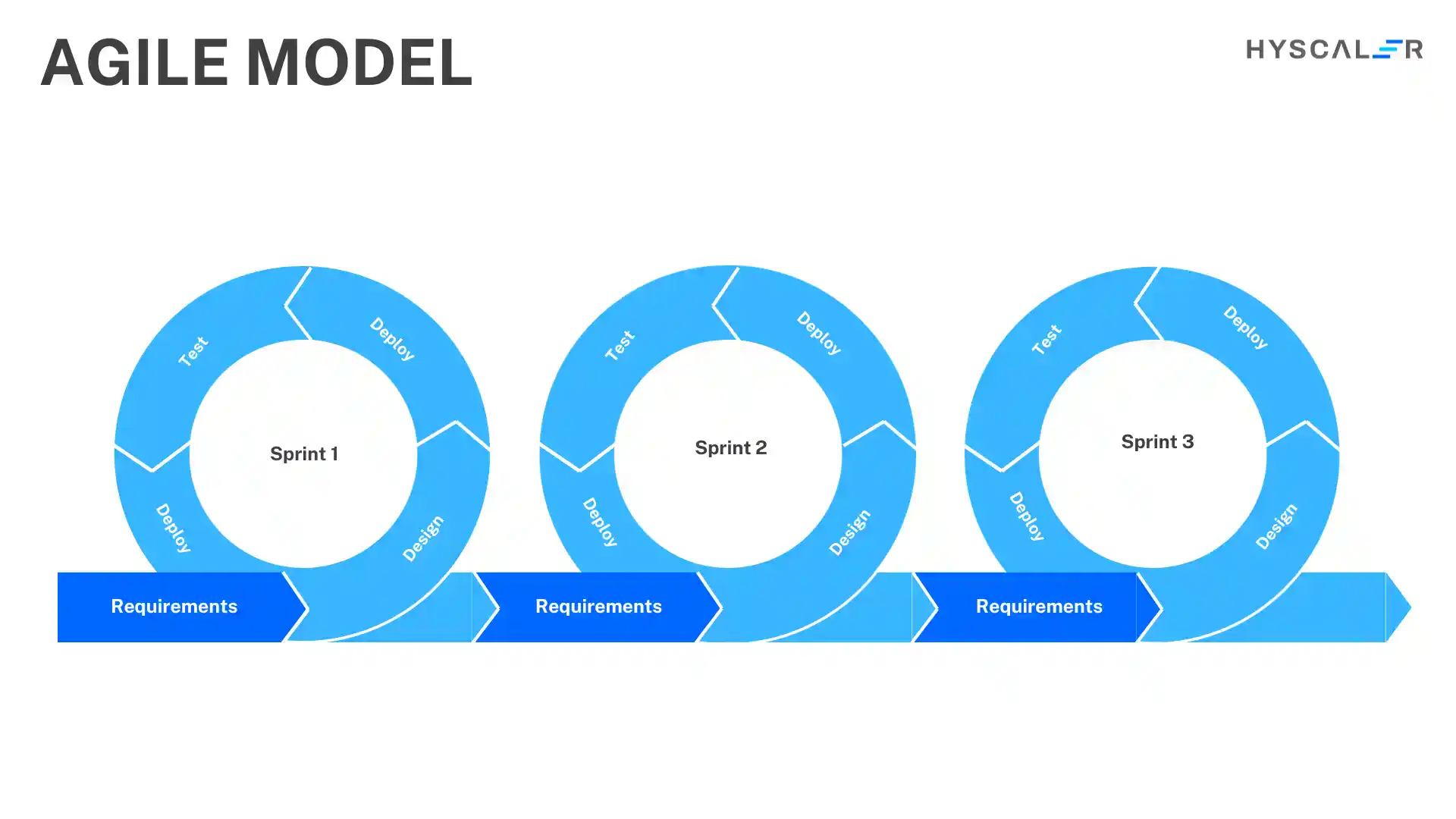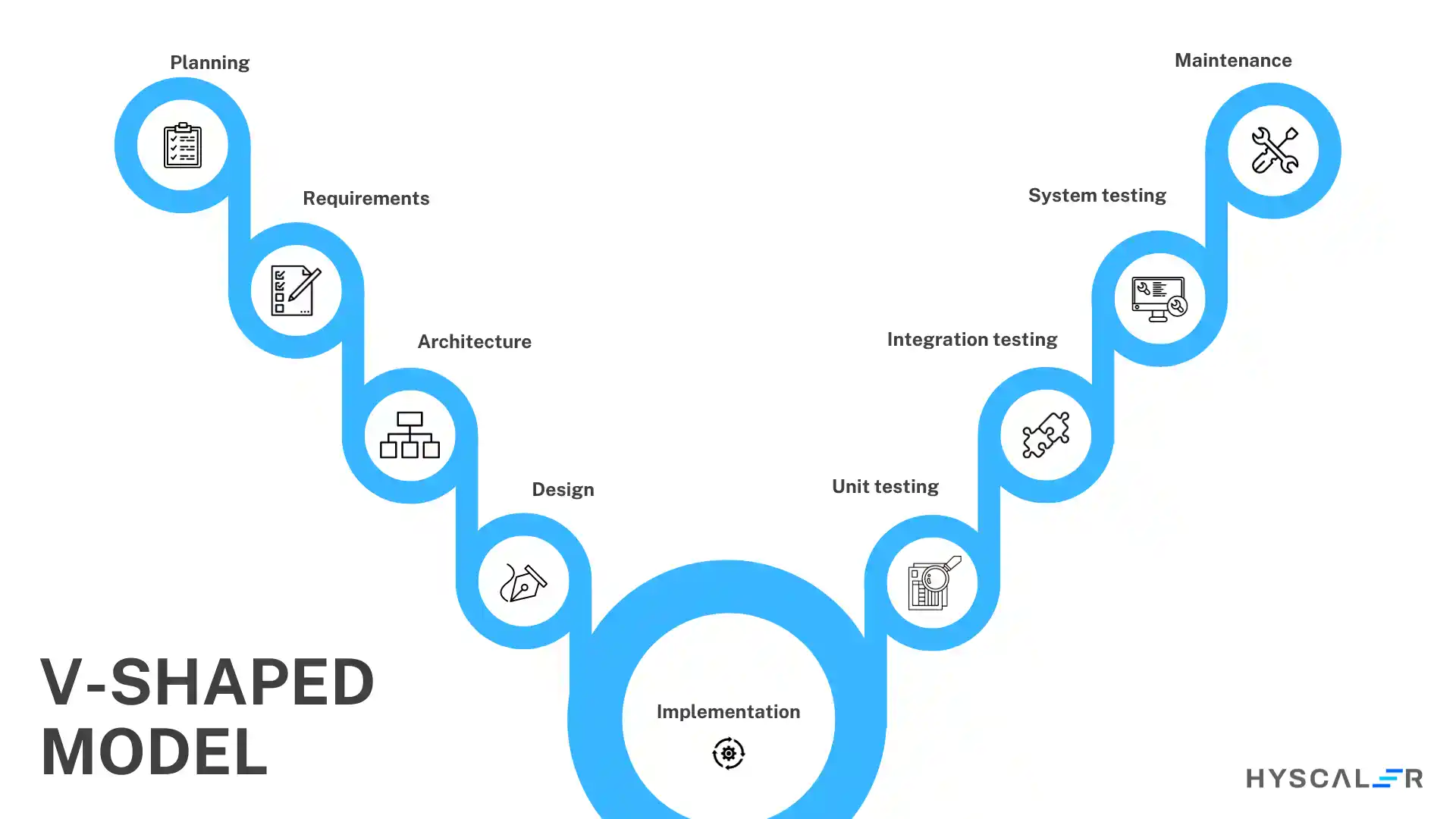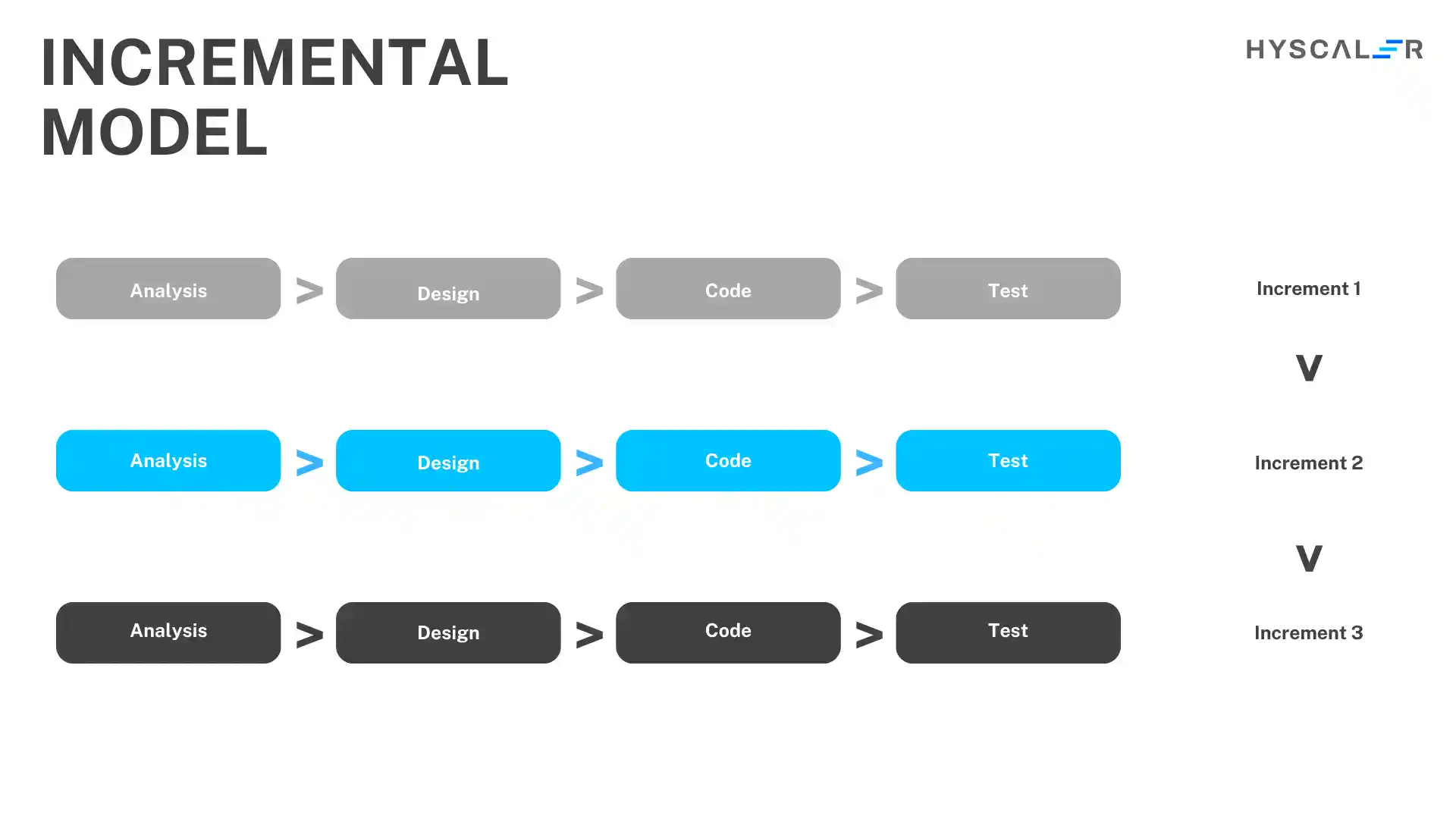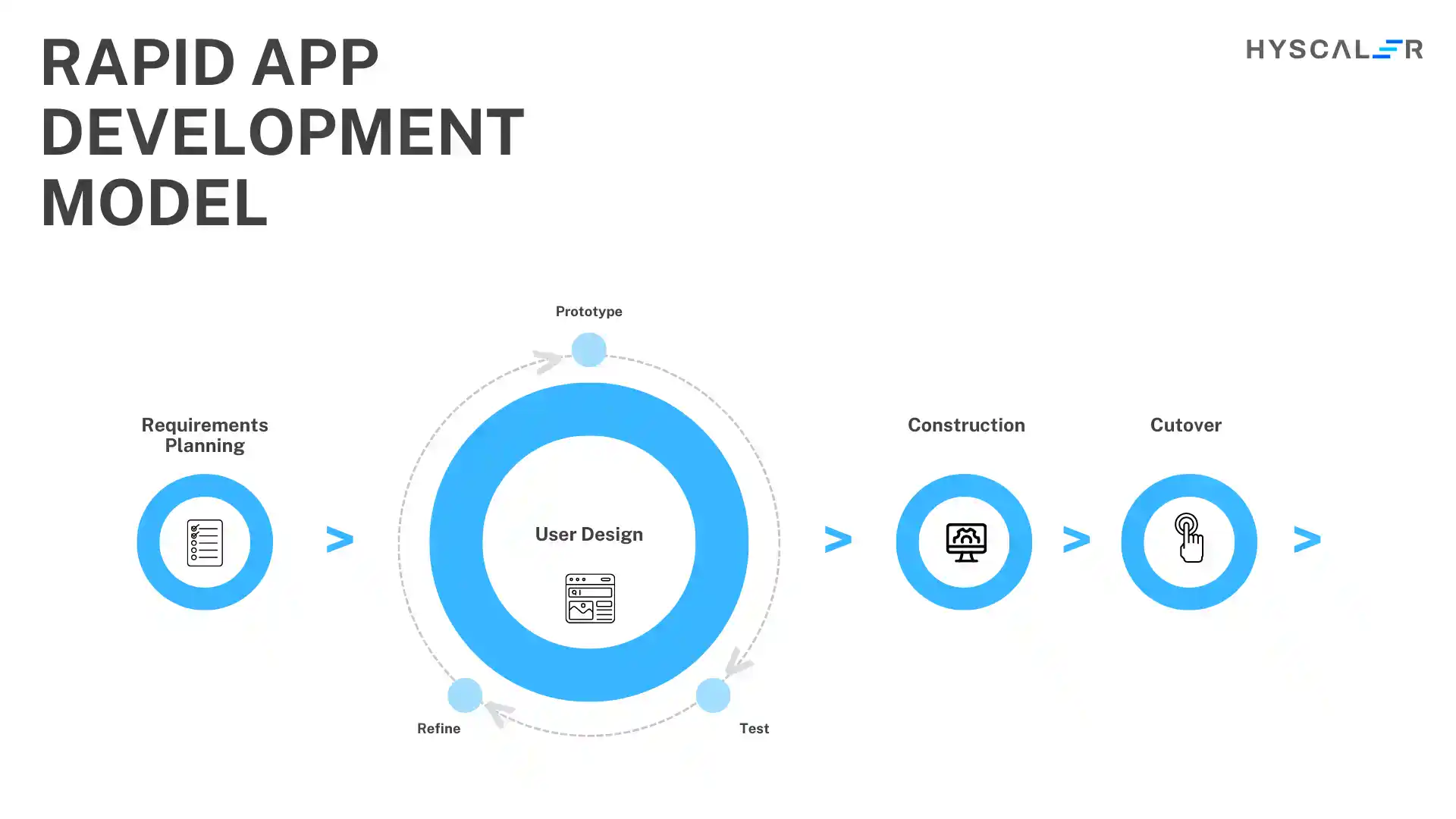Table of Contents
In the digital age, where software is the linchpin of business success, choosing the right software development methodology cannot be overstated. These software development methodologies are not merely strategies but guiding principles that frame the approach to creating robust software solutions.
Understanding Various Software Development Methodologies
Software development methodologies are structured processes for developing information systems. They offer a systematic approach to project management, design, and software engineering. In essence, they’re the compass that guides teams from conception to completion, ensuring quality and efficiency.
Agile: The Dynamic Contender
Agile methodology has revolutionized the software development industry with its emphasis on adaptability and customer-centricity. Agile methodology is a flexible, iterative approach to software development that emphasizes the rapid delivery of functional software components. Unlike traditional methods, Agile accepts change as an inherent part of the development process and encourages constant feedback from end-users. It focuses on cross-functional teams working collaboratively through regular scrums to assess progress and adapt as needed. Agile promotes a highly interactive environment where small, incremental updates are delivered frequently, allowing for quick responses to change and a focus on delivering real value to customers promptly.

Pros:
- Flexibility: Agile adapts to changes even late in the development process.
- Customer Satisfaction: Continuous delivery ensures that the client’s needs are met promptly.
- Team Morale: Agile fosters a collaborative and empowering environment for the development team.
Cons:
- Less Predictability: Agile’s flexible nature can sometimes lead to scope creep and budget overruns.
- Requires Expertise: Agile demands a high level of expertise from team members for effective implementation.
- Not Ideal for All Projects: Agile may not be suitable for projects requiring a fixed scope and budget.
Waterfall Methodology: Sequential and Structured
Waterfall methodology is one of the oldest paradigms of software development, characterized by a linear and sequential design process. It follows a rigid structure where each phase of development cascades into the next, much like a waterfall. This methodology is divided into distinct stages such as requirements gathering, design, implementation, testing, deployment, and maintenance. Each stage must be completed before the next begins, with a heavy emphasis on documentation and planning. Waterfall is best suited for projects with well-defined requirements and where changes are not expected during the development process.

Pros:
- Simplicity in Management: The straightforward, linear progression of phases makes the Waterfall method easy to understand, manage, and explain to stakeholders.
- Well-Defined Structure: Each phase has specific deliverables and a review process, which helps in the meticulous organization of tasks.
- Suitable for Stable Environments: Works best for projects with clear objectives and stable requirements that are unlikely to change.
- Ideal for Predictable Projects: Beneficial for projects where the end product is well-understood from the outset.
- Documentation Focus: Encourages thorough documentation, which can be helpful for future maintenance and reference.
Cons:
- Inflexibility: Once a phase is completed, it is difficult to go back and make changes without starting over, making it less adaptable to change.
- Late Testing Stage: Testing is one of the last phases, which can lead to the discovery of problems late in the process, increasing the cost of fixing them.
- Longer Delivery Times: This tends to be slower due to its sequential nature, which can delay the testing and implementation of the product.
- Not Suitable for Complex Projects: The method can be less effective for projects where requirements are uncertain or likely to change.
- Risk and Issue Identification: Problems and risks are often identified when it is too late or too costly to address them effectively.
V-Shaped Model: Validation and Verification Focus
The V-shaped model is an extension of the Waterfall methodology that adds a strong emphasis on testing. It’s characterized by a corresponding testing phase for each development stage. This model is also known as the Verification and Validation model, where development moves downwards through the design and build phases (Verification) and then upwards through testing and maintenance phases (Validation), forming a V shape. It is suitable for projects with clear objectives and stable requirements. The main advantage of this model is its rigorous testing at each development stage, but changes can be costly due to the model’s inherent rigidity.

Pros:
- Highly Disciplined Approach: The V-Model is systematic and sequential, ensuring that each phase is completed before the next begins.
- Ideal for Small Projects: It works best for small projects with well-defined requirements.
- Early Error Detection: With a focus on verification and validation, the model increases the likelihood of detecting errors early.
- Enhanced Project Tracking: Allows for precise tracking of project milestones and progress.
- Clear Structure: The V-Model’s structured nature facilitates better communication and understanding.
Cons:
- Lacks Flexibility: The model struggles with projects where requirements are ambiguous or likely to change.
- Not Iterative: Does not support revisiting and iterating phases, making it ill-suited for evolving projects.
- Poor Handling of Concurrent Events: The sequential nature of the model does not cater well to concurrent or overlapping events.
- Time and Documentation Intensive: This can be slower due to its extensive documentation and testing requirements.
- Rigid: Adjusting to new requirements or unexpected changes can be challenging and costly.
Incremental Model: Progressive Development and Integration
The Incremental model is a method of software development where the product is designed, implemented, and tested incrementally (a little more is added each time) until the product is finished. It involves both development and maintenance. The product is decomposed into several components, each of which is developed and added to the product in successive versions until the complete product is ready. This model allows for partial implementations of the product to be delivered to the customer and go into production earlier during the life cycle. It can be very effective for projects with well-understood requirements that are expected to evolve over time.

Pros:
- Meets Objectives Fully: Tends to fully achieve software goals by meeting all specified requirements.
- Flexible: Allows for changes in scope and requirements at any stage.
- Early Deliverables: Functional products are delivered earlier in the development process.
- Client Feedback: Enables frequent client interaction and feedback on each increment.
- Simplifies Error Identification: Facilitates easy identification and management of risks and errors.
Cons:
- Requires Thorough Planning: Needs detailed planning and a clear understanding of the complete system.
- Initial Requirement Clarity: A clear definition of the entire system is required upfront to be effective.
- Architecture Challenges: System architecture may face difficulties if all requirements are not understood initially.
- Time-Consuming Error Corrections: Amending errors in multiple units can be time-intensive.
- Rigid Iteration Phases: Phases do not overlap and must be completed in sequence.
Rapid Application Development (RAD): Speedy Development and Iterations
Rapid Application Development is a type of Agile software development methodology that prioritizes rapid prototype releases and iterations. Unlike traditional waterfall methods, RAD focuses on the use of software and user feedback over strict planning and requirements recording. It’s ideal for projects that need to be developed within a short span of time. RAD involves user participation, reusable software components, and informal team communications. The key benefits of RAD are fast project turnaround times and high-quality systems due to user involvement, though it may not be suitable for projects with tight budgets or lacking flexibility for rapid changes.

Pros:
- Speedy Development: Ideal for projects with a clear business objective and user group that are not computationally complex.
- Time-Sensitive Projects: Can deliver products quickly for small to medium-sized projects.
- User-Centric: Involves user feedback and iterations for better end-product usability.
Cons:
- Requires Expertise: Needs a stable team of highly skilled developers and knowledgeable users.
- Intensive Knowledge Requirement: A deep understanding of the application area is crucial for success.
- Limited Scope: Not suitable for large, complex projects that require longer development times.
- Resource Intensive: This can require significant resources to ensure the quality and speed of deliverables.
- Dependency on User Involvement: Heavy reliance on user participation can lead to challenges if stakeholder engagement is low.
Selection Among the Appropriate Software Development Methodologies
Choosing the correct software development methodology is akin to selecting the right tool for a job. Factors to consider include:
- Project Size and Complexity: Larger, more complex projects may benefit from the structure of Waterfall, while smaller, more adaptive projects might thrive with Agile.
- Team Dynamics: A team’s ability to adapt and manage change is critical when considering Agile or DevOps.
- Stakeholder Involvement: Projects with active stakeholder participation are well-suited to Agile’s iterative approach.
The Role of these Software Development Methodologies in Shaping Team Dynamics
The chosen methodology dictates the workflow, communication channels, and overall team structure. It’s essential to align team capabilities and project needs with the methodology’s demands to ensure a harmonious and effective working environment.
Wrapping Up: The Blueprint for Software Excellence
One of the chosen software development methodologies is the blueprint that shapes the entire lifecycle of a software project. From the way, team members interact to how problems are solved and changes are managed, the methodology lays the foundation for success or failure.
In essence, software development methodologies are more than just industry jargon; they’re the strategic core that dictates how a team will navigate the complexities of software creation. Making an informed choice can be the difference between a product that excels and one that merely functions.
As we stand on the precipice of an AI-driven future, the software development methodologies we choose today will define the software landscape of tomorrow. The key is to select a methodology that not only aligns with the project’s goals but also harnesses the strengths of the team, ensuring a path to innovation and market success.
If you find yourself at a crossroads, unsure of which path to take for your software development or web application development journey, consider partnering with HyScaler. Our expertise lies in tailoring development strategies that resonate with your vision while offering scalability, technical prowess, and a commitment to quality. With HyScaler, you can leverage the collective knowledge and experience of seasoned experts to guide your project from conception to completion, ensuring that your software not only meets but exceeds expectations.
Ready to take your project to the next level? Connect with HyScaler today, and let’s transform your software development aspirations into a tangible, successful reality.





